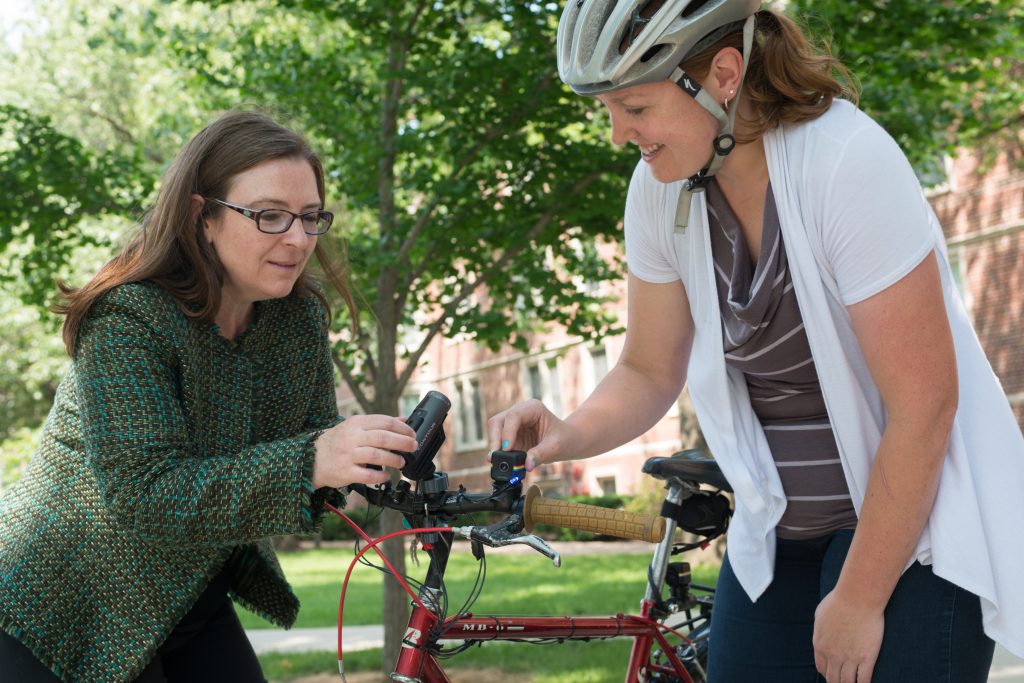With our interdisciplinary partners, the UI IPRC has integrated innovative technology into our injury and violence research and prevention activities. These technologies have helped us study topics ranging from bicycle crashes to cyberbullying using such approaches as integrated geospacial video technologies and cellular phones.
What these technologies have in common: They help us learn how injuries happen, who is at risk, and how we can prevent them in the first place.
See our NEW Tools and Technologies web page.

Here are some examples of our current research using technology:
Bicycle safety: UI IPRC’s Cara Hamann partners with the UI Department of Electrical Engineering to use GPS-enabled helmet cameras to see what bicyclists are doing, what they are experiencing, and where they are going. This technology, called Pedal PORTAL, has been used with both adults and children to examine crashes, near crashes, and bicycling/driving errors. Hamann is now using Pedal PORTAL to study child bicyclist routes to school, and the technology has been expanded to include instrumented bicycles. See video of Pedal PORTAL.
Hamann said with this technology researchers can better understand risk factors for bicycle injuries. “It has shown us that children ride more often than adults on sidewalks. This is an important finding, because sidewalk riding presents different hazards compared to the roadway, such as cars backing in or pulling out, and the drivers may not be looking out for bicyclists in these situations,” she said.
Pedal PORTAL has also allowed Hamann and colleagues to identify real-world scenarios and then test driver responses to bicyclists using simulation in the world-renowned National Advanced Driving Simulator (NADS) at UI’s Research Park.

IPRC Director Corinne Peek-Asa said such simulation allows researchers to safely conduct valuable research. “Many roadway situations such as driving can’t be tested in the real-world because it is not safe or ethical to put study subjects in harm’s way.”
Teen driving: UI IPRC researchers study teen driving using DriveCam, an in-vehicle video feedback system, augmented with GPS. The GPS system tracks the driving amount and routes, and, when there is an abrupt change in speed or steering direction, the cameras capture the moments inside the car and on the roadway before and after this event. Researchers can then analyze the videos to identify driving errors and safety behaviors (like cell phone and seat belt use), and the results are sent to the teen’s parents as a weekly driving report card.
This in-vehicle camera is especially important, Peek-Asa said, because parents often don’t know how well their teen is driving, especially when their teen is not with them.
“This technology helps us identify focus areas and develop new tools for parents to help their teens develop safe driving habits. Our study rigorously evaluates this available technology and merges it with training in successful communication strategies for parents and teens about driving,” she said.
Read more here about how we are using technology to study cyberbullying, rural roadway crashes, and motor vehicle/pedestrian interactions.
Read about UI’s Hank Virtual Environments Lab